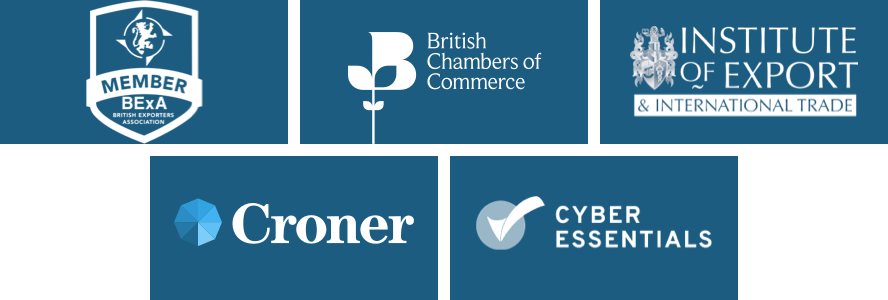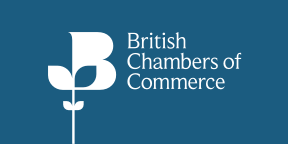BY:
SHARE:

Since Brexit, the movement of goods between the EU, Northern Ireland (NI), and Great Britain (GB) has become significantly more complex. One Customs identifier you might start seeing on invoices is the XI REX number. If you’re wondering what it is, why it’s showing up, and whether it’s valid — you’re not alone.
Let’s break down what’s happening, and why GB traders may start seeing XI REX numbers on invoices — even when they’re not used to seeing them at all. A REX (Registered Exporter System) number is an EU-issued identifier that allows exporters to self-certify the origin of goods under various preferential trade agreements (e.g., EU-UK TCA, EU-GSP). It replaces traditional EU preference certificates like EUR.1. It is especially relevant when the goods being supplied from the EU are above EUR 6,000 in value, and the exporter wants to declare preferential tariff treatment under a Free Trade Agreement (FTA) for a UK/GB-based business to claim the preferential rate of import duty.
Following the UK’s exit from the EU and the implementation of the Northern Ireland Protocol, the Windsor Framework has now been established. Under these arrangements, Northern Ireland remains aligned with specific EU Customs rules, allowing for frictionless trade with the Republic of Ireland (IE) and the broader EU, despite the UK's departure from the EU. The “XI” country code was created to indicate authorisation in place in Northern Ireland under the EU’s Customs framework. So, businesses established in Northern Ireland can
- Apply for an XI EORI (Economic Operators Registration and Identification) number
- Obtain an XI VAT number for intra-EU trade, and
- Apply for an XI REX number, which is recognised in the EU’s Registered Exporter System.
So, when would an XI REX be applicable? The NI company is the exporter of record for goods being sent from NI to a third country under the Generalised System of Preferences (GSP) Scheme that operates in the EU, but also, in certain circumstances, when moving EU originating goods across to GB (England, Scotland and Wales) when
- The goods are of EU preferential origin,
- No work has been undertaken in Northern Ireland on the goods and
- The NI supplier to GB has obtained a Long-Term Supplier Declaration (LTSD) from the original EU supplier (e.g., from ROI).
So, this can be used in two different scenarios:
a) When an NI company purchases goods from an IE (Republic of Ireland) company. The supply from IE to NI is made under an intra-EU movement, meaning the goods are in free circulation within the EU. The NI company receives the goods into NI, takes ownership, and subsequently sells or moves the goods to GB. The arrival into GB cannot be under UK free circulation rules (i.e., a domestic movement) but the arrival must be declared as an import entry. If EU preference applied to the goods when supplied from IE, and the XI company has a LTSD to confirm this, then the EU-UK TCA preference statement can be made by the NI supplier so the preferential rate of import duty will apply into GB.
b) When an NI company purchases goods from an IE (Republic of Ireland) company and though the NI company does not move them out of IE, they take ownership of the goods prior to them being exported from IE to the UK. As the legal exporter of record (using the XI established EORI), the NI company can, if supported by an LTSD from the IE supplier, declare the goods as EU Preferential origin. This means that at import into GB, the import preference duty rate can apply.
It is crucial to understand that, though these goods may physically be in NI, if they do not undergo processing in NI, they are not considered “NI Qualifying” under the UK’s definition for domestic sales. That means:
- They do not automatically benefit from UK internal free circulation, and
- A UK import declaration is required when moving them from NI to GB.
- If they are moved to GB without a Customs entry, that’s a risk of non-compliance.
Is this scenario unusual? No, but it seems odd because we are moving goods between two nations of the United Kingdom. If we swap out Northern Ireland and replace it with a full member country of the EU, then it makes more sense. Let’s replay the two scenarios:
a) When a company purchases goods in one EU country from another company based in a different member state of the EU, we’ll say goods purchased by a Belgian company from Germany. The supply from DE is made to BE under an intra-EU movement, meaning the goods are in free circulation within the EU. The BE company receives the goods in Belgium, takes ownership, and subsequently sells or moves them to GB/UK. The arrival in the UK will be an import. If the EU preference applied to the goods when supplied from Germany to Belgium, and the BE company has an LTSD to confirm this, then the EU-UK TCA preference statement can be made by the BE supplier, so the preferential rate of import duty will apply in GB/UK.
b) When a Belgian company purchases goods from a German company and though the Belgian company does not move them out of Germany, they take ownership of the goods prior to them being exported from the EU to the UK. As the legal exporter of record, the Belgian company (using its EU EORI) can, if supported by an LTSD from the DE supplier, declare the goods as having EU Preferential origin. This allows the import preference duty rate to apply at import into GB/UK.
As a GB importer, you might see a REX number with the XI prefix on the invoice or origin statement. Here's what to verify:
- Is the XI REX valid?
- Use the EU REX validation system (your check confirms it is).
- Was there a UK import declaration?
- Required if goods are not a UK-NI qualifying movement.
- Was an LTSD used?
- The NI exporter must hold this from the EU supplier.
- Was the movement into NI declared under transit?
- Do the FTA rules support the preferential claim?
- Must match rules of origin and documentary requirements.
Northern Ireland’s unique position creates a hybrid set of rules, part of the EU and part of the UK. The XI REX is legitimate — but only in the right context, with all the necessary documentation to support it.
OneCall™ Email assistance as and when required; A one-call solution for all your import, export and customs enquiries. Export help. Import help. Customs help.
Stay informed about customs and international trade matters by subscribing to our OneCall™ service. This comprehensive offering includes a dedicated email helpline for support, timely practical updates direct to your inbox (Did You Know?), monthly UK Customs & Trade Briefings and access to an interactive members' area with an exclusive community for our subscribers.
International Trade Updates & Spotlight Newsletter
Subscribe to our free information emails covering international trade topics...











